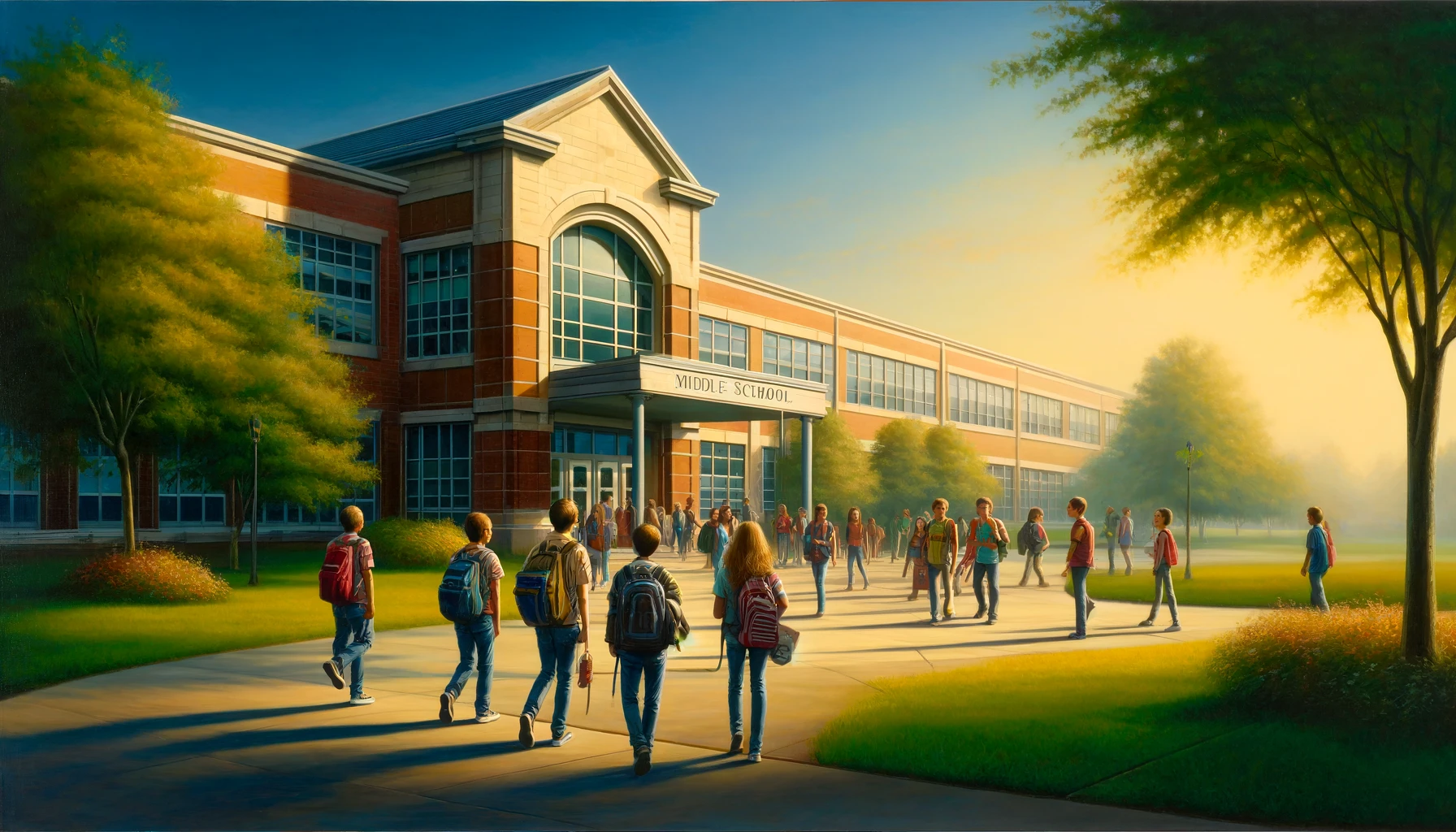Career education is often thought of as a high school endeavor, but starting career exploration and preparation in elementary and middle schools can significantly enhance students’ readiness for future careers. Early exposure to career pathways helps students understand their interests and strengths, making informed decisions about their educational and career trajectories.
Building Career Awareness
Introducing Various Careers:
Elementary and middle schools can introduce students to a wide range of careers through career days, guest speakers, and field trips. These activities help broaden students’ perspectives on the types of jobs available and the skills required for different professions.
Incorporating Career-Themed Lessons:
Teachers can integrate career-themed lessons into the existing curriculum. For example, a math lesson could include real-world problems related to engineering, or a science class could explore careers in environmental science. This approach helps students see the relevance of their studies to potential career paths.
Using Technology for Career Exploration:
Technology can be a powerful tool in career exploration. Schools can use online platforms that provide virtual tours of workplaces, career assessments, and interactive career planning activities. These resources make career exploration engaging and accessible for young students.
Developing Soft Skills
Emphasizing Collaboration and Communication:
Soft skills such as teamwork, communication, and problem-solving are essential for career success. Schools can incorporate group projects, presentations, and peer-review activities to help students develop these skills early on.
Encouraging Critical Thinking:
Critical thinking and creativity are vital in many careers. Teachers can foster these skills through inquiry-based learning, where students investigate questions, problems, or scenarios rather than simply receiving information.
Promoting Social-Emotional Learning (SEL):
SEL programs help students develop self-awareness, self-management, social awareness, relationship skills, and responsible decision-making. These competencies are crucial for workplace success and personal development.
Linking Education to Career Pathways
Creating Career Pathway Programs:
Schools can develop programs that align with local industry needs and economic opportunities. For example, a school near a technology hub might focus on STEM pathways, while one in an agricultural area might emphasize agribusiness careers.
Providing Hands-On Experiences:
Hands-on learning experiences, such as school gardens, robotics clubs, and maker spaces, allow students to apply their academic knowledge in practical settings. These experiences can spark interest in specific career fields.
Collaborating with Community Partners:
Partnerships with local businesses, colleges, and community organizations can provide valuable resources and opportunities for students. These collaborations can include internships, mentorship programs, and after-school clubs that focus on different careers.
Encouraging Parental Involvement
Informing Parents About Career Education:
Schools should communicate with parents about the importance of career education and how they can support their children’s career exploration at home. Providing resources and workshops for parents can enhance their ability to guide their children.
Involving Parents in Career Activities:
Parents can be a valuable resource in career education. Schools can invite parents to participate in career days, serve as guest speakers, or help organize field trips to their workplaces. This involvement provides students with real-world insights and connections.
Supporting Career Conversations at Home:
Encouraging parents to discuss careers with their children can help students reflect on their interests and aspirations. Schools can provide conversation starters and activities that parents and children can do together to explore different careers.
Integrating Career Planning into Academic Counseling
Career Guidance Programs:
School counselors can implement career guidance programs that help students understand the link between their current studies and future career options. These programs can include individual counseling sessions, workshops, and career planning activities.
Setting Academic and Career Goals:
Helping students set academic and career goals from an early age can motivate them to stay focused and engaged in their education. Counselors and teachers can work with students to create personalized learning plans that align with their career interests.
Providing Transition Support:
As students transition from elementary to middle school and then to high school, it is important to provide support and guidance. Transition programs can help students adjust to new academic expectations and continue exploring their career interests.
Utilizing Data to Inform Career Education
Tracking Student Interests and Achievements:
Collecting data on students’ interests, strengths, and achievements can help schools tailor their career education programs. This information can be used to identify trends, adjust curricula, and provide targeted support for students.
Assessing Program Effectiveness:
Regular assessment of career education programs is crucial for continuous improvement. Schools can use surveys, focus groups, and other evaluation methods to gather feedback from students, parents, and teachers.
Adapting to Changing Job Markets:
The job market is constantly evolving, and schools need to stay informed about emerging career opportunities. By monitoring labor market trends and industry demands, schools can adjust their programs to prepare students for future careers.
Promoting Equity in Career Education
Ensuring Access for All Students:
It is important to provide equitable access to career education resources and opportunities. Schools should ensure that all students, regardless of background, have the support they need to explore and pursue their career interests.
Addressing Gender and Racial Disparities:
Schools should actively work to address gender and racial disparities in career education. This can include promoting non-traditional careers for underrepresented groups, providing role models, and creating an inclusive learning environment.
Supporting Students with Special Needs:
Students with special needs require tailored support to explore career pathways. Schools should offer resources and accommodations to help these students identify their strengths and pursue careers that match their abilities.
Fostering a Growth Mindset
Encouraging Lifelong Learning:
A growth mindset, the belief that abilities can be developed through dedication and hard work, is essential for career success. Schools can foster this mindset by promoting lifelong learning and resilience in students.
Celebrating Effort and Progress:
Recognizing and celebrating students’ efforts and progress, rather than just their achievements, can motivate them to keep striving towards their goals. Positive reinforcement helps build confidence and perseverance.
Providing Opportunities for Reflection:
Regular reflection activities, such as journaling or group discussions, can help students evaluate their interests and growth. Reflective practices encourage self-awareness and informed decision-making.
Creating a Supportive School Culture
Building a Career-Focused Environment:
Creating a school culture that values and supports career exploration can make a significant difference. This includes having career-focused events, visible success stories, and a curriculum that integrates career learning.
Training Educators in Career Education:
Professional development for teachers and counselors is essential. Training programs can equip educators with the knowledge and tools they need to effectively guide students in their career exploration.
Aligning School Vision with Career Education:
School leadership should align the school’s vision and mission with the goal of preparing students for future careers. A clear commitment to career education can drive school-wide initiatives and foster a supportive environment.
Conclusion
By starting career education early in elementary and middle schools, educators can help students discover their interests and strengths, set meaningful goals, and prepare for fulfilling careers. Through a combination of awareness-building, skill development, practical experiences, and strong support systems, schools can create a pathway for students to achieve their career aspirations.
Bibliography
- Center for American Progress. “Building a Strong Middle Class Through Career Pathways Programs.” Retrieved from www.americanprogress.org.
- U.S. Department of Education. “CTE Data Story.” Retrieved from www2.ed.gov.
- ACT. “Education Support for Learning Skilled Trades.” Retrieved from www.act.org.
- Council on Foreign Relations. “The Future of American Education: It’s Not All About STEM.” Retrieved from www.cfr.org.


